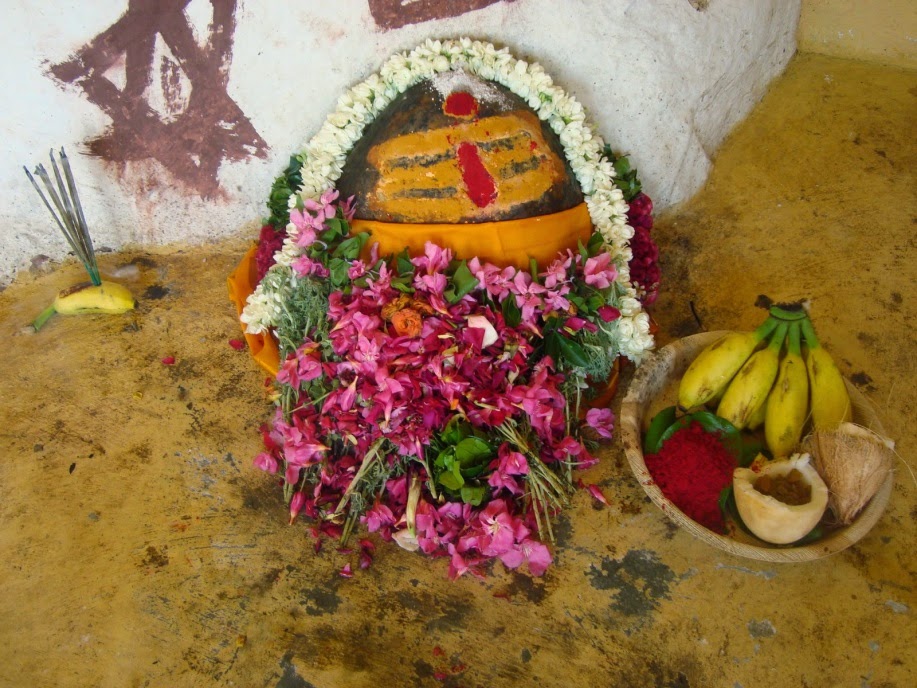Tuesday, 3 February 2015
Monday, 2 February 2015
KANDHAR SASTI KAVASAM & SHANMUGA KAVASAM
 |
| Poster courtesy of Stalin |
Devarayan was already engaged in doing business in Bangalore while merely twenty. When Thirisirapuram Mahavidvan Meenakshi Sundaram Pillai arrived at Bangalore, Devarayan invited him over to his house. Devarayan took the opportunity to learn the intricacies of the Tamil language from Meenashshi Sundaram Pillai and even ventured to learn to write prose. Under the tutelage of Meenakshi Sundaram Pillai, Devarayan wrote two books Kusaylo Baakiyaanam and Sootha Sangetai. Before Meenakshi Sundaram Pillai took leave, Devarasan thanked him and rewarded him by showering him with wealth and honour.
Once Baladevarayan Swamigal had an ailment of the stomach and was undergoing extreme pain. Even after taking all kinds of treatment the pain would not go away. Giving up all hope of recovering he headed for the shores of Thiruchendur to take his own life.
At the moment of his arrival at Thiruchendur the Kandhar Sasti Vizha had just begun. Watching the festivities he had a change of heart and decided to postpone the thought of ending his life. He started on the Sasti Virutham or fast. After having a dip in the sea, he sat to meditate at the Mandapam or hall. Lord Muruga gave him darshan and gave him the gnana or wisdom to sing Kandhar Sasti Kavasam. He began his first verse with "Sastiyai Noke Saravana Bavanaar". He wrote and sang the Kavasam first at Thiruchendur, and over the next five days he ventured to the rests of Lord Muruga’s abodes - Thiruparangkundram, Palani, Swamimalai, Thirutani, and Palamuthircholai and wrote and sang further songs, all of these which was later compiled as the Kandhar Sasti Kavasam. At the end of this venture he realized his stomach ailment had disappeared. He realized then that the ailment was only a reason for him to begin authoring the Kadhar Sasti Kavasam.
CN Nachiappan writes that Devarayan came to Thiruchendur with the hope that Lord Muruga might heal his ailment. While at Thiruchendur his pain was relieve slowly and he began singing the Kavasam as a thanksgiving to the Lord.
Devarayan took on the garb of a mendicant and wished to be called Devaraya Swamigal, henceforth, at Thiruchendur.
Paamban Swamigal another devout bakta of Lord Muruga used to sing Baladevarayan Swamigal’s Kandhar Sasti Kavasam and later wished he could write similar hymns on Lord Muruga himself which he did compose and write later.
Appavu, as he was called, was born between 1850 and 1852 at Paamban to Saatappa Pillai and Sengamala Ammaal.
Each time he was faced with danger Lord Murugan saved Appavu. Once when he was either five or six years old Lord Muruga held on to his hands and saved him from drowning in a pond.
Appavu started schooling in 1866 in a missionary school in Rameshwaram. Appavu at a very tender age of 13 had began to compose and sing songs on Lord Muruga. His first composition was entitled Gangaiyai Sadaiyil Paritthu. True to his first composition, henceforth Tamil devotional hymns continuously flowed like Mother Ganga. He composed one song each day and compiled the first 100 songs in the first 100 days. He was summoned and received upadesha from Sethumathava Aiyar Swamigal who chanced to see this compilation of his. Pressured by his upadesa guru he submitted to marrying Kaalimuthammaal in 1878.
Lord Muruga came to cure his daughter with the sacred vibhuti. Similarly his wife cured him by applying the vibhuthi. After completing a pilgrimage Paamban Swamigal arrived at Kanchi. Lord Muruga gave him his darshan. Back home he wrote the Shanmuga Kavasam and Panchamirtha Vannam in 1891. Lord Muruga appeared to his wife and disclosed to her that whenever and wherever these songs were sang, he would appear to bless these souls.
At Piraban Valasai he dug a square hole in the premises of a graveyard and started meditating in it beginning on 17 March 1894. On the 7 th day (on 23 March 1894) of tavam or austerity, Lord Muruga appeared to him with Agathiyar and Arunagirinathar. On the 35 th day (20 April 1894), he ended his tavam on the instructions of Lord Muruga. That day was Chitirai Pornami. A year from this episode Paamban Swamigal took up monk-hood. He moved to Chennai in 1895 from Paamban. In Chennai he gave upadesa to aspiring devotees. After a year he came to Kuyavan Petai in Thirupuliyur, near Chidambaram where he wrote the Paripooranaananda Botham and Tagaraalaya Ragasiyam in 1896. After visiting Kumbakonam, he was directed by Lord Muruga to return to Chennai.
In 1897 he wrote the 1100 hymns titled Thirupa. In 1902 he made a pilgrimage to Kaasi. Lord Muruga as usual saved him from further danger while on his pilgrimage. Returning from his pilgrimage he continued his literary works in Chennai. In Chidambaram he got himself involved in spearheading the Saivite cause and as a result was summoned numerous times to the courts. The result of this seven year struggle between 1904 and 1911, saw him defeat his opponents and his next literary work the Saiva Samaya Sarabam saw the light of the day. Back in Chennai he composed the Kumaarastavam, Srimath Kumara Swaamiyam, and Sivagnana Deepam in 1918, 1921 and 1922 respectively.
On 27 December 1923 he sustained a fracture when a horse-cart ran over his left leg. He was admitted to the general hospital. The doctors told him it was not possible for his bones to mend. His devotees Sinnasamy Jhotidar, Sivasankara Tambiran, and Gnana Sekara Mudaliar started reciting his Shanmuga Kavasam in the hope that he recovers. The day was 28 December 1923. On the 11th day (7 January 1924), Lord Muruga appeared to him. His fractured leg healed. On the 15th day he was fully recovered.
On 27 December 1923 he sustained a fracture when a horse-cart ran over his left leg. He was admitted to the general hospital. The doctors told him it was not possible for his bones to mend. His devotees Sinnasamy Jhotidar, Sivasankara Tambiran, and Gnana Sekara Mudaliar started reciting his Shanmuga Kavasam in the hope that he recovers. The day was 28 December 1923. On the 11th day (7 January 1924), Lord Muruga appeared to him. His fractured leg healed. On the 15th day he was fully recovered.
Meanwhile he went to Coimbatore and the Nilgiris in 1926. Later he moved to Bangalore on 29 May 1928. Here a light engulfed him and entered his mouth to reach his heart. On another occasion, four torches lit on their own when the electricity was cut. He returned to Chennai shortly on 17 July 1928.
He asked his devotees to purchase a plot of land in Thiruvaanmiyur with whatever income he made through his literary works and many publications. On 30 May 1929 at 7.15 am he locked his breadth within to merge with the Lord.
Source:
CN Nachiappan’s compilation of KAVASA KOTTHU
Paamban Srimath Kumara Gurudaasa Swamigal Aruliya Paadalgal, Nithya Paaraayana Thiraththu, Pini Neekkum Perumarunthu, published by the Sri Mayuranaathar Aalayam, Malaysia.
Paamban Srimath Kumara Gurudaasa Swamigal Charitthiram, published by V. Thirugnanam, Madurai.
Sunday, 1 February 2015
Saturday, 31 January 2015
Wednesday, 28 January 2015
Nataraja Patthu-நடராஜப் பத்து
M. Prasanna Kumar has posted a beautiful song on Lord Nadaraja, written by Sirumanavur Munusamy some 300 years back. This song has been written along the lines of Ramalinga Adigal's beautiful hymn in his Manumurai Kanda Vasagam.
Prasanna has written a review of the song too at https://www.youtube.com/watch?v=8tXXT731pYE.
நடராஜ பத்து - சுமார் முன்னூறு வருடங்களுக்கு முன்பு வாழ்ந்த சிறுமணவூர் முனுசாமி என்பவர் எழுதிய நடராஜ பத்து சைவ அன்பர்களிடம் மிக பிரபலாமக விளங்கியது. மிக எளிதாக விளங்கக் கூடிய வார்த்தைகள், செறிவு நிறைந்த கருத்துக்கள், அழகிய சந்தங்கள் என்பதாக அமைந்த விருத்தங்கள் வகையைச் சேர்ந்தது நடராஜ பத்து பாடல்கள். ஒவ்வொரு பாடலின் முடிவிலும் "ஈசனே சிவகாமி நேசனே எனையீன்ற தில்லைவாழ் நடராஜனே"என்று முடியும் வரிகள் நெஞ்சத்தைக் கொள்ளை கொள்வதாக அமையக்கூடியது. ஒவ்வொரு பாடலையும் மனமொன்றிப் படித்தால் அதன் பொருள் எளிதில் விளங்கும். தில்லையில் விளங்கும் ஸ்ரீ நடராஜரின் மேல் அளவிற்கடந்த பக்தியினால் "நடராஜ பத்து" பாடல்களை சிறுமணவூர் முனுசாமி எழுதியுள்ளார். - M. Prasanna Kumar
Tuesday, 27 January 2015
Sunday, 25 January 2015
COUNTING MY BLESSINGS
What would have taken me a mere forty steps from my prayer room to the landing on the first floor, turned out to be a struggle that night. I woke up in the middle of the night to go to the loo. Agathiyar greeted me in the light of the agal or earthen lamp that is lit 24/7. As I stood upright on that particular night nearing thai amavasai or total darkness, I lost consciousness.
When I came to I could feel the cold concrete floor still chill from the coldness of the month of Marghazhi lingering around although we had jut moved into the warmer and welcoming Thai. My abdomen, back and limbs felt equally cold as I lay on the floor in front of Agathiyar and not on my single piece of comfortable foam bed that I remembered I had slept on.
I stood up again. Did not remember taking another step. When I came around I was back on the cold damp floor right at the entrance to the prayer room. I saw Agathiyar shine in the halo of the lighted room. I stood up again.
When I came around I was at the foot of the steps in my living room. I got up straight, again, and walked up the flight of steps to the landing. This I could vividly remember, calling out to my wife as I stood between the bedroom and the toilet door. The next moment both my wife and kids were calling me out with my head supported by my wife in her arms. I asked to use the loo. My wife reminded me not to lock the door from inside and stood watch outside waiting for me to emerge again. She lead me to the master bedroom and laid me down on the bed. I dozed off as if nothing took place.
When I came to I could feel the cold concrete floor still chill from the coldness of the month of Marghazhi lingering around although we had jut moved into the warmer and welcoming Thai. My abdomen, back and limbs felt equally cold as I lay on the floor in front of Agathiyar and not on my single piece of comfortable foam bed that I remembered I had slept on.
I stood up again. Did not remember taking another step. When I came around I was back on the cold damp floor right at the entrance to the prayer room. I saw Agathiyar shine in the halo of the lighted room. I stood up again.
When I came around I was at the foot of the steps in my living room. I got up straight, again, and walked up the flight of steps to the landing. This I could vividly remember, calling out to my wife as I stood between the bedroom and the toilet door. The next moment both my wife and kids were calling me out with my head supported by my wife in her arms. I asked to use the loo. My wife reminded me not to lock the door from inside and stood watch outside waiting for me to emerge again. She lead me to the master bedroom and laid me down on the bed. I dozed off as if nothing took place.
The next morning my daughter drove me to see our family doctor. I had been having a fever that would not go away over the weekend. As it was a Monday, his clinic was filled to the brim with patients, having waited to see him over the weekend. My daughter found a single chair available across the long bench where I was sitted with the rests. Suddenly I just stooped over, my hands reaching for the floor way ahead of me. My daughter leapt over to me and held me while a foreign patient to my right too lent me a hand to check my fall. He moved a bit to created space for me to lay my upper torso on the bench. My daughter requested him to hold on to me while she made arrangements to move me to the bed. She came out of the adjacent room shortly and led me to the patients observation bed.
Dr Jaswant joined us shortly and began diagnosing me. He indicated that I could be having the dengue fever or a viral fever. He gave me two packs of intravenous fluids, took my blood sample and ask to see him again the next day.
The next day my wife, daughter and another foreign patient helped me onto the patients observation bed. I received another two packs of fluid. My previous day's blood platelet reading stood at 130.
The third day Dr Jaswant took another blood sample. Later that evening I asked my daughter to drive me over to the General Hospital. As we waited, Dr Jaswant informs over the phone that my platelet count taken in the morning showed a drop to 99. The results at the General Hospital showed a further drop to 91. I was confirmed as having the dengue fever and warded. The intravenous fluids were continued and my water intake and discharge was monitored closely. After I safely skipped through the second and middle phase that was said to be mined with complications and dangers, the intravenous water intake was stopped. As my platelet stabilized at 76, and I started on my way to recovery, I was sent home when my reading achieved 83 and asked to work on improving the blood count by faithfully continuing to consume 250 ml of fluids every hour. (On Tuesday 27.1.2015, I had a platelet reading of 362 that was a good sign that I had recovered fully).
As I had several falls on one day, I was given a ECG check (An electrocardiogram (EKG or ECG) is a test that checks for problems with the electrical activity of your heart. An EKG translates the heart's electrical activity into line tracings on paper. A natural electrical system causes the heart muscle to contract and pump blood through the heart to the lungs and the rest of the body - Source : http://www.webmd.com/heart-disease/electrocardiogram) and a CT scan too (Computerized (or computed) tomography, and often formerly referred to as computerized axial tomography (CAT) scan, is an X-ray procedure that combines many X-ray images with the aid of a computer to generate cross-sectional views and, if needed, three-dimensional images of the internal organs and structures of the body. A CT scan is used to define normal and abnormal structures in the body and/or assist in procedures by helping to accurately guide the placement of instruments or treatments - Source: http://www.medicinenet.com/cat_scan/article.htm) before I left.
By Agathiyar's grace I was given a clean slade. As each doctor interviewed me during my short duration of stay at the hospital, they were both surprised and glad to learn that here was a man of age fifty-six, who had not been warded into the hospital until then, and were glad on seeing a clean CT scan even after taking several falls.
As I lay on bed and took in all the activities that were going on around me at the hospital, I started counting my blessings, for Agathiyar had saved me again. The Chinese Gods had kept their part of the deal when they asked that my mother give me away in adoption to them when she pleaded them to save me as a child from extensive purging and diarrhea. The caretaker at the Chinese temple looked into his big book of fortune many years later to inform me that the Gods were forever looking over my shoulders. The day I had the fall, numerous times, Agathiyar had held on to me and placed me on the floor gently. My elder daughter just came back in the nick of time for her semester break when I gave in to the fever. She was there to drive me around to the clinic and hospital and do the other errands too. Agathiyar and Thirumular came to the aid of my second daughter a year back when she was having the dengue fever and helped raise her platelet and come out of it.
How can I ever repay the kindness and compassion of the Gods, and their emissaries, missionaries, angels and guides? How can I ever repay Agathiyan?
How can I ever repay the kindness and compassion of the Gods, and their emissaries, missionaries, angels and guides? How can I ever repay Agathiyan?
On a lighter vein, I joked around that the very first time I stepped into the hospital at the age of 13 was because I was bitten my a dog. The very first time I was warded at 56 was because I was bitten again, this time by a mosquito.
Friday, 16 January 2015
KALLAR & THE SIDDHAS
Bala, Suren and Dyalen besides going on a pilgrimage to India, turned out to be good correspondents and gathered many information, materials, video footage, and snapped lots of photos for Siddha Heartbeat. Siddha Heartbeat thanks them.
They interviewed the priest at Konganar's temple at Uthiyur too.
See more on Konganar at http://temple.dinamalar.com/news_detail.php?id=731
KALYANA THEERTAM 2015
Dr Ravikumar Kareesan sent these vibrant and colorful photos of Agathiyar and Lobama at Kalyana Theertam with a note:
The abishekam on New Year's Day went well. Thanks to Mr Arul Murugan and Mr Ramesh for their help to perform successfully.I have attached some pictures which includes taken during flood. Magarishi is kind enough remain their to bless our humanity. I will keep you informed of more updates.Please visit http://agasthiyarravikumar.org
Thursday, 15 January 2015
BRONZE CREATIVE OF SWAMIMALAI
Sri Varadaraj of the Bronze Creative and his brothers are the creators of the masterpiece statue of Agathiyar that is in Agathiyar Vanam in Malaysia.
 |
| Agathiyar at Agathiyar Vanam |
 |
| Varadaraj (left) in Malaysia |
 |
| Agathiyar packed and delivered in this box by flight to Malaysia |
 |
| Agathiyar who captured the attention of devotees by opening his eyes in his statue created by Varadaraj |
 |
| The very first photo of Agathiyar that Varadaraj sent me upon completion of the statue |
 |
| Two more statues in the making |
Today he shared the completed statues at http://www.imok.in/GalleryImageView.php?id=329 and http://www.imok.in/GalleryImageView.php?id=328. What a magnificent job.
 |
| A massive 21 inch statue weighing 52 kgs |
Wednesday, 14 January 2015
Tuesday, 13 January 2015
OTHIYAPPAR
Bala Chandran told me Othiyappar was so beautiful. Although I have not been to Othimalai, I know what he means. I saw the beauty of Lord Vishnu at Thirupati. Although it was only for a minute, it was worth the wait queuing up. I saw the beauty of Kanchi Kamatchi, also for a while only. Suren tells me the abhisegam or libation and alangakaram or dressing for Othiyappar took a while but was worth the wait too.
It is no surprise then that Agathiyar should mention the auspiciousness of Othimalai and about his Guru Othiyappar in a Nadi reading that was mailed to Sri Velayudham Karthikeyan Aiya by a reader of his blog Siththan Arul, Sri Guru Moorthy. The Nadi reading is reproduced with a transliteration in English below.
சங்கரனுக்கு, சரவணகுகன் ஓதிய கிரி
sankaranukku, saravanakugan oothiya giri
sankaranukku, saravanakugan oothiya giri
சங்கடப்பட்ட பல்மாந்தர்கள் தலைவிதி மாறிய கிரி
sangadappattha pal maanthargal thalai vidhi maariya giri
sangadappattha pal maanthargal thalai vidhi maariya giri
சபலங்கள்,சலனங்கள் விட்டு ஓடிடும் கிரி
sabalangal, salananggal vitthu oodidum giri
sabalangal, salananggal vitthu oodidum giri
சிறப்பில்லா முன்வினை ஊழ்பயன் சிறப்பாக மாற்றித் தரும் கிரி
sirappillaa munvinai uzhpayan sirappaaga maatthri tharum giri
sirappillaa munvinai uzhpayan sirappaaga maatthri tharum giri
சிந்தனையில் அணுவளவும் கட்டமில்லா தன்மையை நல்கிடும் கிரி
sinthanaiyil anuvalavum katthamillaa thanmaiyai nalgidum giri
sinthanaiyil anuvalavum katthamillaa thanmaiyai nalgidum giri
சிறப்போ, சிறப்பில்லையோ, பேதம் பார்க்கா வாழ்க்கையை ஏற்க வைக்கும் கிரி
sirappo, sirappillaiyo, petham paarkka vazhkaiyai yerka vaikkum giri
sirappo, sirappillaiyo, petham paarkka vazhkaiyai yerka vaikkum giri
சப்த கன்னியர்கள், அன்னையோடு, அன்னை அருளால் அருளும் கிரி
sabta kanniyargal, annai odu, annai arulaal arulum giri
sabta kanniyargal, annai odu, annai arulaal arulum giri
செப்புங்கால், பஞ்சமும் அடங்க, பஞ்சவதனத்தோன் அருளும் கிரி
seppungkaal, panjamum adanga, panjavathanaththon arulum giri
சிறப்பாக எத்தனை குன்றுகள் இளையவன் அருளால் இருந்திட்டாலும்,
sirappaaga yetthanai kundrugal elaiyavan arulaal erunthitthaalum
குன்றுக்கெல்லாம் உயர் குன்றாய் இன்றும் சான்றாய் அருளும் கிரி
kundrukkellaam uyar kundraai indrum saandraai arulum giri
sirappaaga yetthanai kundrugal elaiyavan arulaal erunthitthaalum
குன்றுக்கெல்லாம் உயர் குன்றாய் இன்றும் சான்றாய் அருளும் கிரி
kundrukkellaam uyar kundraai indrum saandraai arulum giri
அன்னையோடு, ஐயன் அமர்ந்து அன்றும், இன்றும்,என்றும் அருளும் கிரி
annaiyodu, aiyan amarnthu andrum, indrum, yendrum arulum giri
நீறு வேறு, நாமம் வேறு என்று அறியாமையால் எண்ணும் மாந்தனுக்கு,
neeru veru, naamam veru yendru ariyaamaiyaal yennum maanthanukku
நீறு பூத்த அக்னிபோல் நீரோடு நாமமும் கலந்து வேங்கடகிரியாய் அருளும் கிரி
neeru veru, naamam veru yendru ariyaamaiyaal yennum maanthanukku
நீறு பூத்த அக்னிபோல் நீரோடு நாமமும் கலந்து வேங்கடகிரியாய் அருளும் கிரி
neeru pootha agnipol neerodu naamamum kalanthu vengada giriyaai arulum giri
கட்டிய கணவன் காதில் ரகசியமாய் மனையாள் ஓதினாலும்,
katthiya kanavan kaathil ragasiyamaai manaiyaal oothinaalum,
கட்டிய மனைவி ஒதுகிறாளே என்று தாய் ஓதினாலும்,
katthiya manaivi othugiraale yendru thaai oothinaalum,
உபயத்தையும் தாண்டி பிள்ளைகளுக்கு எதை ஓதினாலும்
ubayatthai thaandi pillaigalukku yethai oothinaalum
மாந்த குரு சிஷ்யனுக்கு ஓதினாலும் அனைத்திலும் பேதமுண்டு.
maantha guru sisyanukku oothinaalum anaithilum petham undu.
சுயநல நோக்குண்டு.
suyanala nokkundu.
பேதமில்லா தாண்டிய நிலையில் வேதமெல்லாம் ஓர் உருவாக
pethamillaa thaandiya nilaiyil vedhamellaam oor uruvaaga
ஓம்கார நாத வெள்ளம் ரூபமாக,
ongkaara naadha vellam roopamaaga,
நேத்திரத்தில் கருணை வெள்ளம் பிரவாகமெடுக்க,
nethiratthil karunai vellam piravaagam edukka,
அறுவதனமும் ஐவதனமாகி, எழு பிறப்பும் எட்டென விரட்டி,
aruvathanamum aivathanamaagi, yezhu pirappum yetthena viratthi,
உபயவினையும் இல்லாது ஒழித்து, சூல நேத்திரத்தோன்
ubaya vinaiyum illaathu ozhitthu, soola nethiratthon
திரு மைந்தன் சதுரத்தை நவரசமாய் பிழிந்தெடுத்து,
thiru mainthan sathuratthai navarasamaai pizhintheduthu,
அதனையும் தாண்டி பல்வேறு நுட்பத்தை பேதமில்லா ஓதி ஒருமுகமாய்,
athanaiyum thaandi palveru nutpatthai pethamillaa oothi orumugamaai,
திருமுகமாய், ஒரு நினைவாய் மாந்தன் வாழ அருளும் கிரி,
கட்டிய கணவன் காதில் ரகசியமாய் மனையாள் ஓதினாலும்,
katthiya kanavan kaathil ragasiyamaai manaiyaal oothinaalum,
கட்டிய மனைவி ஒதுகிறாளே என்று தாய் ஓதினாலும்,
katthiya manaivi othugiraale yendru thaai oothinaalum,
உபயத்தையும் தாண்டி பிள்ளைகளுக்கு எதை ஓதினாலும்
ubayatthai thaandi pillaigalukku yethai oothinaalum
மாந்த குரு சிஷ்யனுக்கு ஓதினாலும் அனைத்திலும் பேதமுண்டு.
maantha guru sisyanukku oothinaalum anaithilum petham undu.
சுயநல நோக்குண்டு.
suyanala nokkundu.
பேதமில்லா தாண்டிய நிலையில் வேதமெல்லாம் ஓர் உருவாக
pethamillaa thaandiya nilaiyil vedhamellaam oor uruvaaga
ஓம்கார நாத வெள்ளம் ரூபமாக,
ongkaara naadha vellam roopamaaga,
நேத்திரத்தில் கருணை வெள்ளம் பிரவாகமெடுக்க,
nethiratthil karunai vellam piravaagam edukka,
அறுவதனமும் ஐவதனமாகி, எழு பிறப்பும் எட்டென விரட்டி,
aruvathanamum aivathanamaagi, yezhu pirappum yetthena viratthi,
உபயவினையும் இல்லாது ஒழித்து, சூல நேத்திரத்தோன்
ubaya vinaiyum illaathu ozhitthu, soola nethiratthon
திரு மைந்தன் சதுரத்தை நவரசமாய் பிழிந்தெடுத்து,
thiru mainthan sathuratthai navarasamaai pizhintheduthu,
அதனையும் தாண்டி பல்வேறு நுட்பத்தை பேதமில்லா ஓதி ஒருமுகமாய்,
athanaiyum thaandi palveru nutpatthai pethamillaa oothi orumugamaai,
திருமுகமாய், ஒரு நினைவாய் மாந்தன் வாழ அருளும் கிரி,
thiru mugamaai, oru ninaivaai maanthan vazha arulum giri
ஞானத்தை நல்கும் கிரி
gnanatthai nalgum giri
gnanatthai nalgum giri
அஞ்ஞானத்தை அடியோடு அழிக்கும் கிரி
ajgnanathai adiyodu azhikkum giri
ajgnanathai adiyodu azhikkum giri
பேதத்தை நீக்கும் கிரி
pethatthai neekkum giri
pethatthai neekkum giri
வேதத்தை உணர்த்தும் கிரி
vedhatthai unartthum giri
vedhatthai unartthum giri
சீரற்ற குணங்களை சீராக்கும் கிரி
seeratra gunangalai seeraakkum giri
seeratra gunangalai seeraakkum giri
நிலைத்த செல்வத்தை நல்கும் கிரி
nilaittha selvatthai nalgum giri
nilaittha selvatthai nalgum giri
வாழ்வின் தடைகளை நீக்கும் கிரி
vazhvin tadaigalai neekkum giri
vazhvin tadaigalai neekkum giri
எதிர்பார்த்த விடைகளை நல்கும் கிரி
yethirpaartha vidaigalai nalkum giri
yethirpaartha vidaigalai nalkum giri
கர்ம நிலைகளை மாற்றும் கிரி
karma nilaigalai maatrum giri
karma nilaigalai maatrum giri
அக உளைச்சல் ஒழிக்கும் கிரி
aga ulaichal ozhikkum giri
aga ulaichal ozhikkum giri
பேதம் காட்டா வேத கிரி
petham kaattha vedha giri
petham kaattha vedha giri
ஓம் எனும் பிரணவம் ஒலிக்கும் நாத கிரி
aum yenum pranavam olikkum naadha giri
aum yenum pranavam olikkum naadha giri
இளையவன் திருவடி பாதம் படிந்த கிரி
elaiyavan thiruvadi paatham padintha giri
elaiyavan thiruvadi paatham padintha giri
அன்னை நிரந்தரமாய் அருளும் கிரி
annai nirantharamaai arulum giri
annai nirantharamaai arulum giri
ஐயனோடு இன்று அனைவரும் இருக்கும் கிரி
aiyanodu endru anaivarum erukkum giri
aiyanodu endru anaivarum erukkum giri
ஓதும் கிரி அது ஓதிய கிரி
oothum giri athu oothiya giri
oothum giri athu oothiya giri
பேதம் தவிர்த்து பிரணவநாதம் கலந்து ஒலிக்கும் கிரி
petham thavirthu pranava naadham kalanthu olikkum giri
petham thavirthu pranava naadham kalanthu olikkum giri
Although Bala and his friends did not have the opportunity to take a photograph of Othiyappar, Sri Velayudham Karthikeyan has posted numerous photos of Othiyappar on his blog Siththan Arul. They are amazingly beautiful. Here are some of them. Karthikeyan Aiya has also posted an article on Othiyappar at http://atmaanubhavangal.blogspot.ru/2012/10/blog-post_13.html. See another devotee's coverage of this temple at http://bhogarsiddhar.blogspot.ru/2011_03_01_archive.html
Subscribe to:
Posts (Atom)






























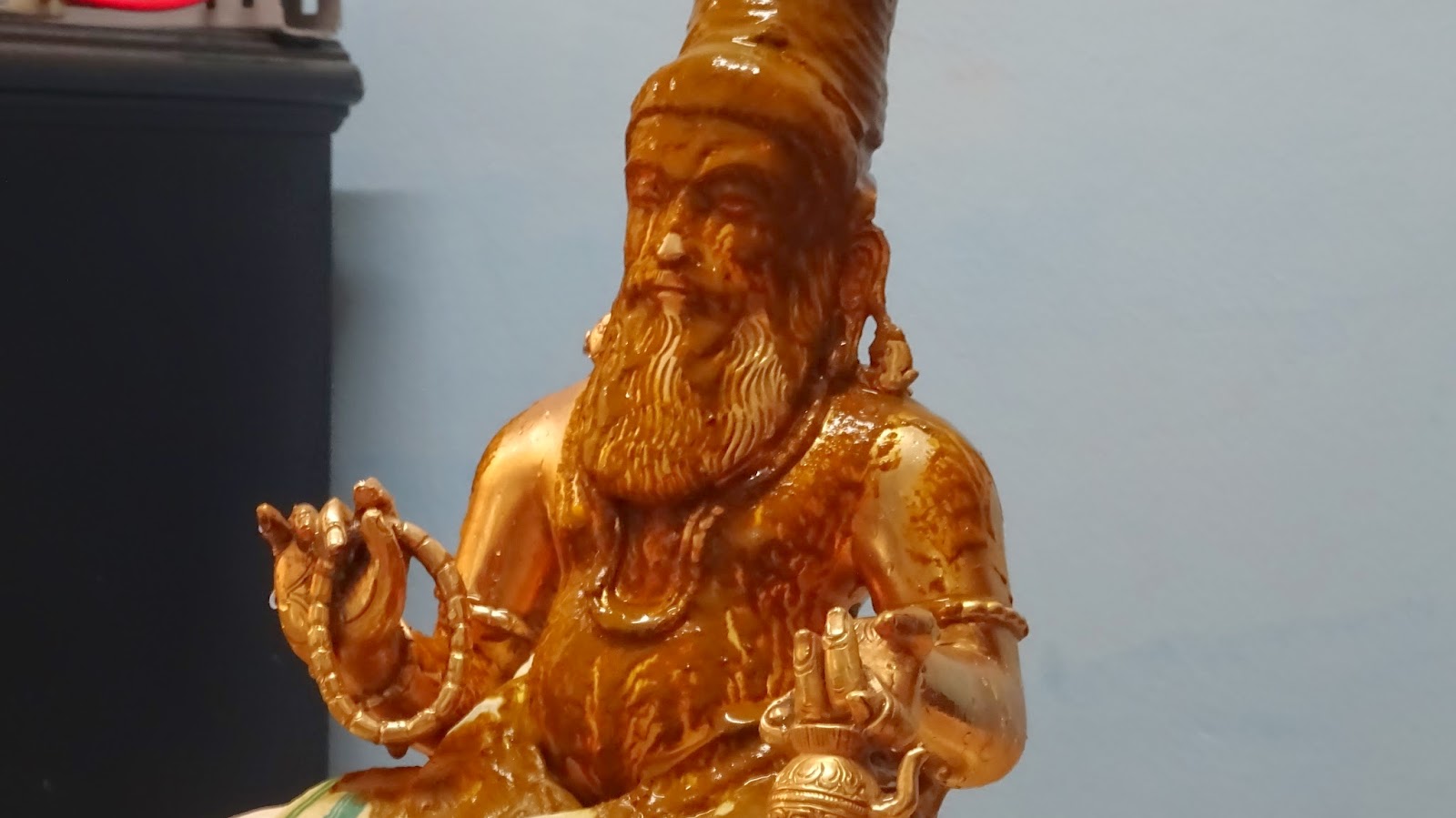


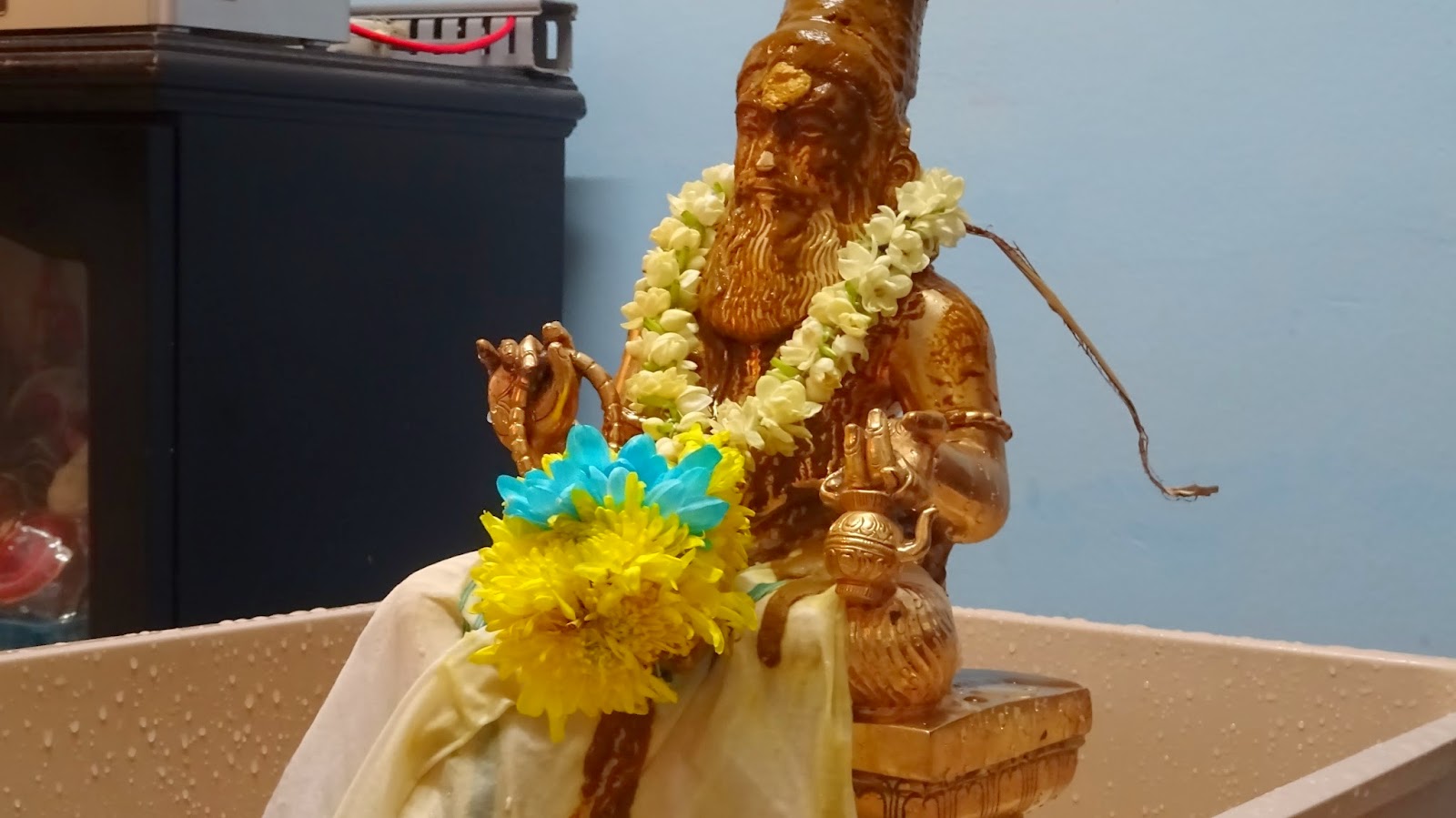


































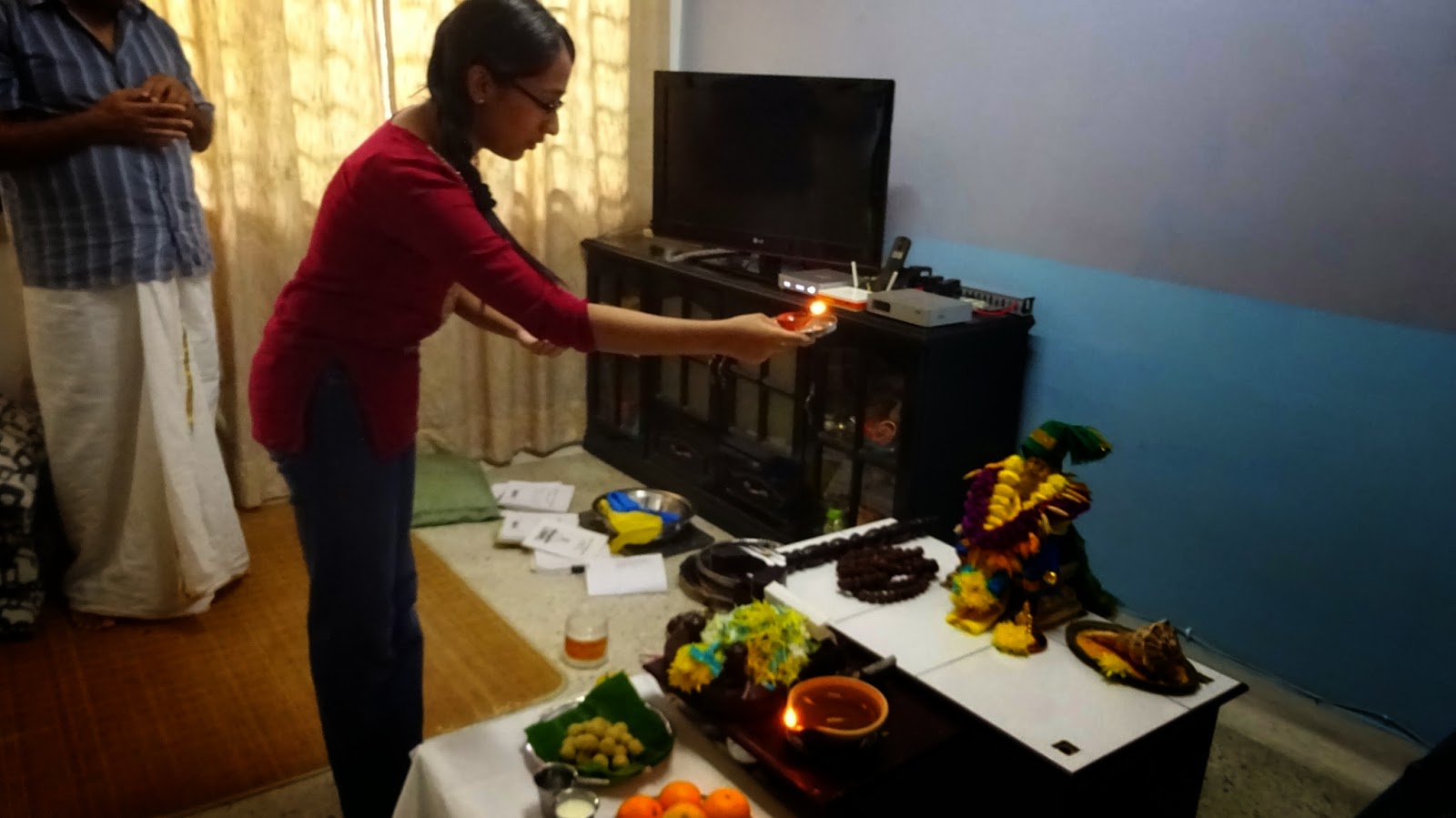

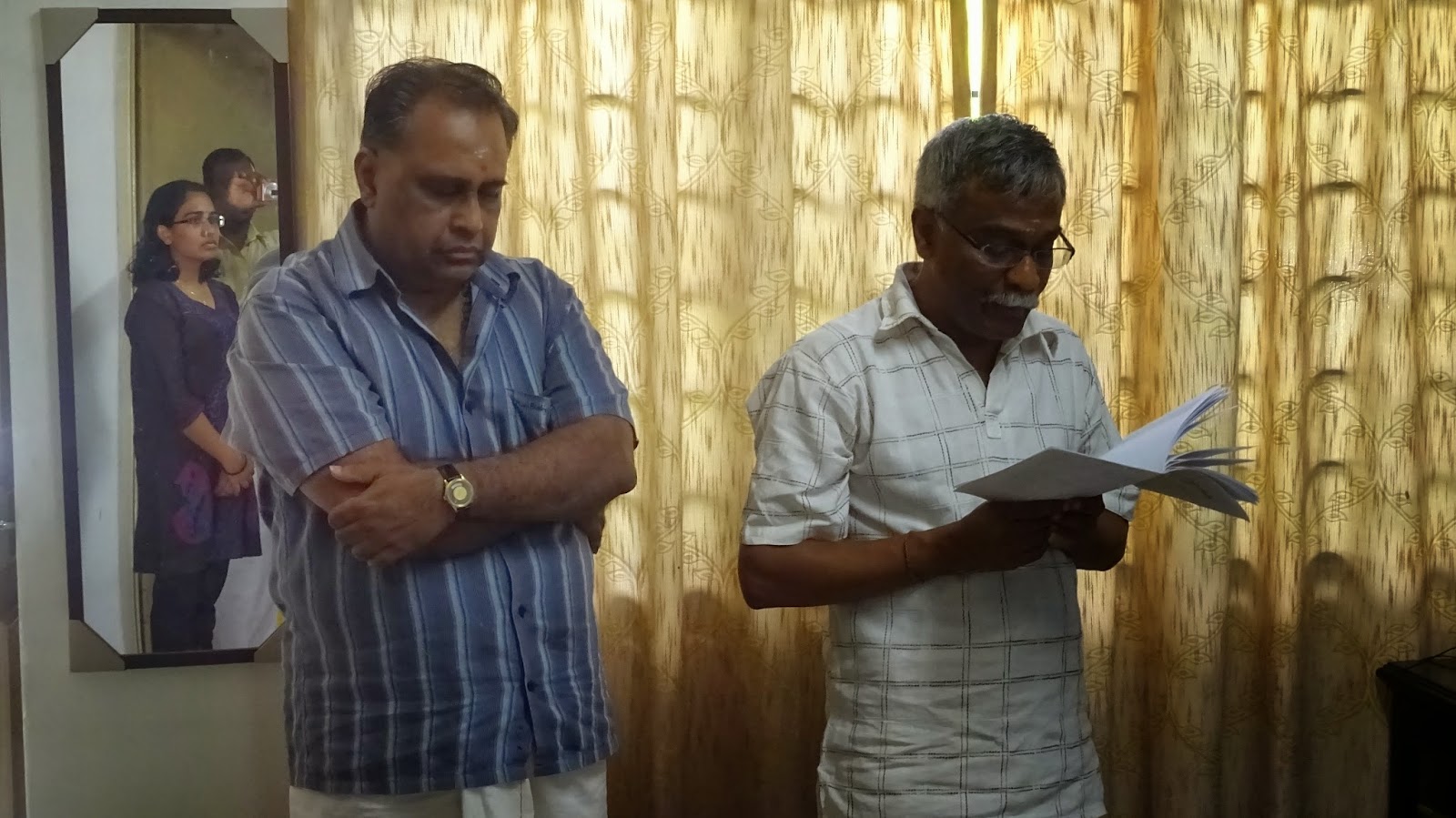



















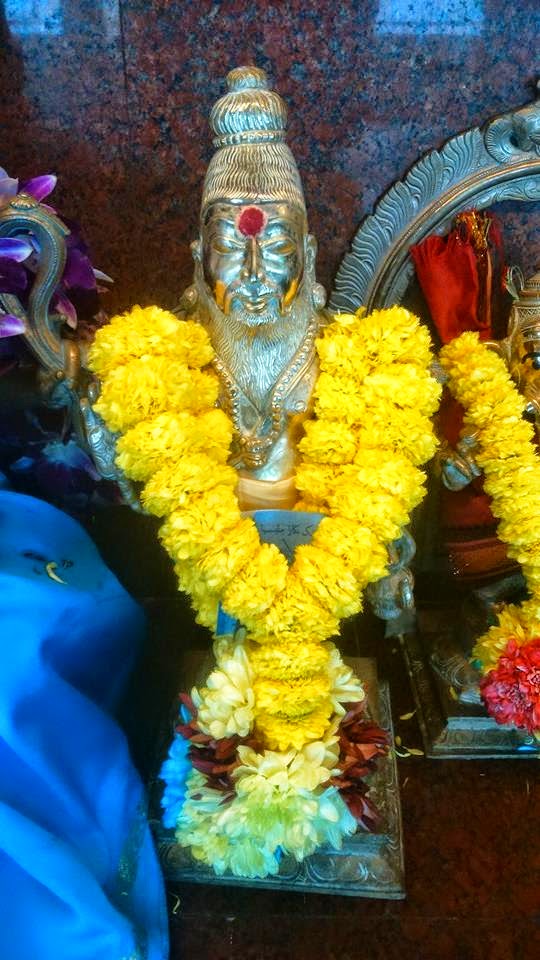
.jpg)
.jpg)
.jpg)
.JPG)
.JPG)














